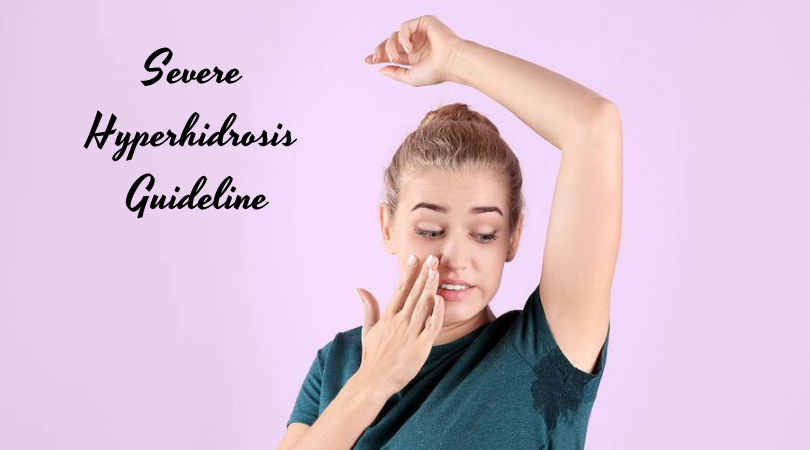 The work of the sweat glands is involved in thermoregulation and is aimed at the sweat production. With the increased functioning of the tubular channels, excess sweat is released, called hyperhidrosis. The pathology is characterized by a general and local form: sweat is secreted throughout the body or in specific areas.
The work of the sweat glands is involved in thermoregulation and is aimed at the sweat production. With the increased functioning of the tubular channels, excess sweat is released, called hyperhidrosis. The pathology is characterized by a general and local form: sweat is secreted throughout the body or in specific areas.
The local form is characterized as more common. It affects the armpits, groin, feet, palms, face. The causes of local hyperhidrosis, as well as treatment methods, are multiple.
Treatment is absolutely necessary, hyperhidrosis gives the patient a lot of inconvenience – from the inability to shake hands with a wet palm to wearing bright clothes, on which sweat stains are more visible.
Local and general hyperhidrosis have different causes. Increased sweating of a local nature is not so terrible, minor disorders in the body contribute to it, which cannot be said about general hyperhidrosis. But a local disease does not allow a person to live a full life. With any excitement or change in air temperature, the body is covered with sweat, and the clothes get wet through.
Effective treatment of any disease works with the mechanisms of its development. A broken vicious circle and elimination of the root cause of the pathology contributes to the instant symptoms’ disappearance.
Fighting the symptoms alone does not solve the problem and does not cure hyperhidrosis. Over time, it obtains a more complex form and flow. Treating increased sweating is recommended by looking for the root cause.
Physiological sources of excessive sweating:
Pathological conditions contributing to the disease are:
One or more of these reasons contribute to the development of the secondary form. The primary disease form is attributed to heredity or congenital pathologies. So, hyperhidrosis makes itself felt even in childhood, when the child has no diseases of a concomitant and provoking nature. It is also important to remember that non-health factors can cause hyperhidrosis:
The doctor conducts a visual examination, after which he can prescribe Minor’s iodine-starch test.
Hyperhidrosis is manifested by moist parts of the body, profuse sweat, and a repulsive scent. Each symptom is important when the doctor evaluates the disease’s severity. In addition to visual examination, a specialist may prescribe Minor’s iodine-starch test, gravimetry and evapometry. The latter refer to quantitative research methods that are practically not used.
The work of Minor’s test is to apply an iodine solution to problem areas of the patient’s body. Starch is poured onto the dried spot. Sweat dissolves iodine by reacting to starch, resulting in black spots in the areas of perspiration. The size of the latter allows you to determine the affected area and the amount of treatment.
Local hyperhidrosis has different forms:
The first three forms are most common. Not a single form poses a threat to human life, and also does not affect his health. Local hyperhidrosis becomes the cause of social problems. People predisposed to excessive sweating suffer from the ability to fully communicate with representatives of the opposite sex, play sports, and are limited in their choice of work.
Another symptom that accompanies hyperhidrosis is diaper rash, to which dermatoses join. The most severe problem is the unpleasant scent that defies antiperspirants.
If antiperspirants and drugs do not help, then surgery is performed.
Excessive sweating can be treated with the following methods:
Treatment begins from simple to complex – from antiperspirants to surgery, in the absence of results from previous methods and drugs.
Healing deodorants. Apply to armpits, arms, feet and even the face. They act like cosmetic products, from which they are distinguished by a higher concentration of active ingredients. Use 30 minutes after showering before bedtime on completely dry skin. It is important to strictly follow the instructions so that irritation and allergic rashes do not appear. It is forbidden to use after depilation.
Iontophoresis. During the procedure, the patient immerses problem areas in a water bath, to which a low voltage current generator is connected. A positive result is achieved after 8-10 procedures. Upon the return of the problem, iontophoresis is repeated according to the previous scheme. The procedures are prohibited in case of pregnancy, heart problems, epilepsy and the presence of metal implants in the body.
Botulinum toxin. Popular as a rejuvenation injection. It is injected intradermally, which blocks the impulses transmitted from the nerves to the sweat glands, as a result of which sweating is minimized. The effect of the procedure lasts up to 6 months. It is not allowed for myasthenia gravis, acute infectious diseases, pregnancy and the age of 16 years.
Curettage. In the course of this surgical method, the sweat glands are mechanically destroyed. For this, a special device is used – a curette. The procedure is performed under local anesthesia. The effect lasts up to 6 months, after which renewed glands are formed, producing less sweat.
Laser. The most modern treatment method. The sweat glands are destroyed with a laser beam. The body’s recovery is fast. A long lasting effect is observed after the laser.
Category: General Info
Tags: human health, hyperhidrosis, medicine
© 2025 www.curesweatypalms.com. All rights reserved.